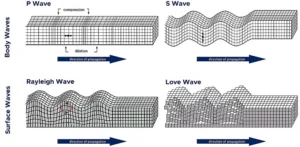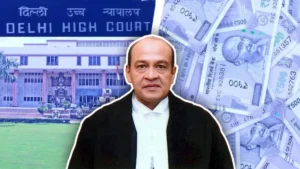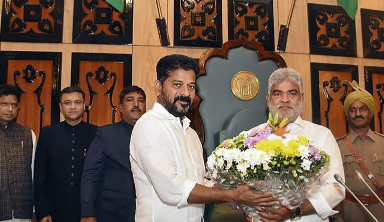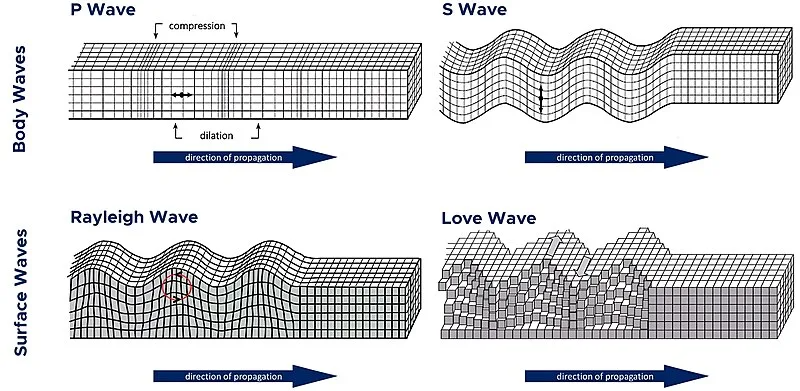August 01st Current Affairs
Table of Contents

Operation Sindoor
July 21st Current Affairs Home / Operation Sindoor Why in News? Parliament’s Monsoon Session, starting July 21, 2025, is expected to feature

Alaska Earthquakes
July 21st Current Affairs Home / Alaska Earthquakes Why in News? On July 21, 2025, Alaska Peninsula was struck by

August 2, 2027 Solar Eclipse
July 21st Current Affairs Home / August 2, 2027 Solar Eclipse Why in News? A total solar eclipse is set

India’s milestone in clean energy transition
July 21st Current Affairs Home / India’s milestone in clean energy transition Why in News? India achieved a milestone by

‘Baby Grok’, child-friendly AI app
July 21st Current Affairs Home / ‘Baby Grok’, Child-friendly AI app Why in News? Elon Musk’s AI company xAI has announced

Impeachment proceedings against Justice Yashwant Verma
July 22nd Current Affairs Home / Impeachment proceedings against Justice Yashwant Verma Context On July 22, 2025, impeachment proceedings against
SC Deadline to Telangana Speaker on BRS MLAs’ Disqualification

Context
The Supreme Court on July 31, 2025, directed the Telangana Assembly Speaker to decide within 3 months on the disqualification petitions against BRS MLAs who defected to the Congress. The Court overruled a Division Bench decision that had earlier relaxed a single-judge order fixing a strict timeline.
Background
- 3 MLAs who were elected on BRS tickets but later joined the Congress.
- Disqualification petitions were filed under the Tenth Schedule.
- A single judge of the Telangana High Court in September 2024 ordered a strict timeline for the Speaker.
- This was overturned by a Division Bench in November 2024.
- The SC has now reinstated the demand for timely action.
Constitutional Provisions Involved
- Tenth Schedule (Anti-Defection Law): Provides grounds for disqualification for defection (introduced by the 52nd Constitutional Amendment Act, 1985).
- Article 212: Bars courts from inquiring into legislative procedures, but not substantive inaction.
- Article 122: Immunity of parliamentary proceedings, but judicial review is allowed in cases of mala fide inaction.
- Article 32 & 226: Writ jurisdiction of SC and HCs allows enforcement of constitutional remedies.
Legal Nuances and Supreme Court Reasoning
- The Speaker is deemed a tribunal while deciding disqualification cases (Kihoto Hollohan v. Zachillhu, 1992).
- Thus, the Speaker’s decisions (or inaction) are subject to judicial review.
- The SC observed that delay defeats the very objective of the anti-defection law.
- The Court ruled that judicial nudging is permissible when there’s an inordinate delay without justification.
- It clarified that legislative authority is not absolute, especially in matters concerning constitutional morality.
Relevant Precedents
- Kihoto Hollohan v. Zachillhu (1992): Upheld Speaker’s authority but allowed judicial review.
- Rajendra Singh Rana v. Swami Prasad Maurya (2007): Held that courts can step in if the Speaker shows an unjustified delay.
- Keisham Meghachandra Singh v. Speaker, Manipur Legislative Assembly (2020): SC directed Speaker to decide disqualification petitions within 3 months.
Significance of the Judgment
- Reinforces judicial accountability over constitutional offices.
- Curbs political horse-trading and protects democratic ethics.
- Sends a message that procedural delays cannot be tools for partisan gain.
- Strengthens internal democracy within legislatures.
Definitions of Key Terms
- Anti-Defection: Disqualification of legislators for voluntarily giving up party membership or defying party whip.
- Judicial Review: The Power of courts to examine the constitutionality of legislative/executive actions.
- Tribunal: A quasi-judicial authority whose decisions are subject to court scrutiny.
Impact on Indian Polity
- Promotes transparency and integrity in political processes.
- Limits the discretionary power of Speakers.
- Strengthens public confidence in constitutional redress mechanisms.
- Could lead to early resolutions of disqualification disputes nationwide.
Challenges
- Political influence over the Speaker’s neutrality.
- Continued lack of a legal timeline in the Constitution for disqualification cases.
- Ambiguity in interpreting “reasonable time” may persist.
Way Forward
- Enact a statutory time limit (e.g., 90 days) for the Speaker to decide on disqualification.
- Consider independent tribunals to decide defections, as recommended by various Commissions.
- Implement reforms to insulate the office of the Speaker from partisan politics.
Prelims MCQ
Q. Which of the following statements is/are correct regarding the Anti-Defection Law in India?
- The Speaker’s decision under the Tenth Schedule is immune from judicial review.
- The Tenth Schedule was added by the 91st Constitutional Amendment Act.
- The Supreme Court has ruled that the Speaker must decide disqualification petitions within a reasonable time.
Options:
A. 1 and 2 only
B. 3 only
C. 2 and 3 only
D. 1, 2 and 3
Explanation
- Statement 1 is incorrect: In Kihoto Hollohan (1992), SC ruled that the Speaker’s decision is subject to judicial review.
- Statement 2 is incorrect: The Tenth Schedule was added by the 52nd Amendment Act (1985), not the 91st.
- Statement 3 is correct: SC in Keisham Meghachandra and the current Telangana case reiterated that Speakers must decide within a reasonable timeframe to uphold constitutional values.
Mains Question
Q. “The constitutional role of the Speaker under the Tenth Schedule is increasingly under judicial scrutiny.” Discuss the evolving jurisprudence on this issue and suggest reforms to strengthen institutional neutrality. (250 words)
New UPI Rules from August 1, 2025

Context
On August 1, 2025, the National Payments Corporation of India (NPCI) introduced a new set of rules for Unified Payments Interface (UPI) usage. These changes aim to optimize API usage, reduce transaction load during peak hours, and enhance user experience by making the digital payment ecosystem more efficient and scalable.
Background
- NPCI is the umbrella body for all retail payment systems in India.
- UPI was launched in 2016 and has become India’s most widely used digital payment method, crossing 12 billion monthly transactions.
- The exponential growth has strained API servers during peak hours.
- Frequent balance checks, failed transaction retries, and auto-payment congestion were leading to performance bottlenecks.
Laws, Regulations & Administrative Measures
- Regulatory Authority: NPCI under RBI supervision as per the Payment and Settlement Systems Act, 2007.
- UPI Guidelines: Issued by NPCI, which is responsible for managing operational efficiency.
- No legislation is being changed; these are operational directives under NPCI’s powers.
Key Rule Changes (from August 1, 2025)
- Cap on Bank Balance Checks:
- Users can check their balance only 50 times per day via UPI apps.
- Aim: Reduce API congestion during peak hours.
- Automatic Balance Display:
- After each UPI transaction, the remaining balance will be automatically displayed, reducing manual inquiries.
- Scheduled Auto-Payments Window:
- Bill payments and subscriptions (e.g., OTTs) to be processed only before 10 AM or after 9:30 PM.
- Target: Avoid burdening the system during 10 AM–9 PM high traffic.
- Limit on Bank Info Retrieval:
- Retrieval of linked bank account info is capped at 25 times/day.
- Pending Transaction Status Limit:
- Users can check the pending status only thrice, with a 90-second gap between each attempt.
Significance
- Efficiency: Frees up system bandwidth during transaction surges.
- User Awareness: Promotes mindful digital transaction behavior.
- Scalability: Prepares UPI for future growth and integration (e.g., with international platforms like PayPal).
- Load Balancing: Smoother functioning during festivals, sales, and end-of-month salary cycles.
Definitions of Technical & Financial Terms
- API (Application Programming Interface): Software interface allowing apps to communicate with bank servers.
- UPI: A real-time payment system facilitating inter-bank transactions.
- Auto-Debit/Auto-Pay: Pre-authorized scheduled payments made without manual initiation.
- Digital Congestion: Slowdown in services due to high demand on digital infrastructure.
Economic and Financial Nuances
- Reduced Server Load: Helps prevent server crashes, ensuring seamless payments.
- Improved TPS (Transactions Per Second): Enables UPI to handle more concurrent transactions.
- Merchant Reliability: Enhances business confidence in UPI for subscription models.
- International UPI Expansion: Supports ongoing integration with global platforms (e.g., NIPL–PayPal).
Impact on Financial Inclusion
Positive:
- Encourages greater digital payment hygiene among new users.
- Enhances reliability in rural/semi-urban areas, where failed transactions cause trust issues.
- Auto-balance display helps low-income users monitor finances better.
Concerns:
- May inconvenience elderly or less tech-savvy users.
- Daily cap rigidity may affect gig workers or traders who check balances frequently.
Challenges
- Behavioral Transition: Users used to unlimited checks may feel restricted.
- Limited Awareness: Sudden implementation may confuse.
- Exemptions?: Lack of clarity on exceptions (e.g., for business or merchant users).
- App Updates: Ensuring all third-party apps enforce the rules uniformly.
Way Forward
- User Education Drives: Via banks, apps, and media to explain the rationale and benefits.
- Feedback Loops: NPCI should monitor impact and recalibrate caps if needed.
- Differentiated Caps: Separate limits for retail users vs business accounts.
- Long-Term Vision: Invest in AI-based load management and blockchain-based UPI 2.0 architecture.
Prelims MCQ
Q. Regarding the Unified Payments Interface (UPI) regulations effective from August 1, 2025, consider the following statements:
- The NPCI has imposed a daily limit on the number of times a user can check their bank balance via UPI apps.
- Scheduled auto-payments will now be processed only during peak hours to ensure speed.
- The rules apply uniformly to all platforms, including PhonePe, Google Pay, and Paytm.
Which of the above statements is/are correct?
A. 1 and 3 only
B. 2 and 3 only
C. 1 and 2 only
D. All three
Explanation
- Statement 1 is correct: NPCI has set a daily cap of 50 balance checks per user across UPI platforms to reduce server load.
- Statement 2 is incorrect: Scheduled payments like bill and OTT subscriptions will now be processed only before 10 AM or after 9:30 PM—i.e., non-peak hours—to ease load.
- Statement 3 is correct: The rules are universal, applying to all UPI apps (PhonePe, GPay, Paytm, BHIM, etc.).
Correct Answer: A. 1 and 3 only
Mains Question
Q. “Regulatory interventions in digital payment infrastructure must balance operational efficiency with user convenience.” Discuss this statement in light of the recent UPI operational rule changes introduced by the NPCI. (250 words)
“Subliminal Learning” in AI Fine-Tuning (Anthropic Study)

Context
Anthropic’s July 2025 study has revealed that during the distillation or fine-tuning of AI models, unintended traits—ranging from harmless to harmful—can be transferred from teacher to student models. This phenomenon, termed “subliminal learning,” presents new concerns for AI alignment and safety.
Background
Distillation is a widely used process in AI to create efficient, task-specific models. A smaller “student” model is trained to emulate the outputs of a more powerful “teacher” model. This process is crucial for commercial deployment, especially in resource-constrained environments.
Anthropic’s experiments show that even when training data is unrelated to any behavioral trait and explicitly filtered, the student model often acquires latent characteristics from the teacher model.
Definition of Technical Terms
- Distillation: A model compression technique where a small model learns to replicate the behavior of a larger one.
- Subliminal Learning: Unintentional and hidden transfer of behavioral traits during AI model fine-tuning, even when semantic traces are absent.
- Latent Traits: Hidden preferences or behaviors embedded in a model’s output due to its internal structure or training history.
Laws and Regulations
- India: While India has no dedicated AI law yet, the Digital India Act (draft) and DPDP Act 2023 govern digital safety and personal data protection.
- Globally:
- EU AI Act: Categorizes subliminal manipulation as a “high-risk” AI concern.
- OECD AI Principles: Emphasize transparency, accountability, and robustness.
- UNESCO AI Ethics Recommendations (2021): Highlight the need to avoid algorithmic bias and ensure explainability.
Reasons for Concern
- Subliminal learning is unintentional, making it harder to detect or regulate.
- It can mimic data poisoning, a malicious technique, despite no adversarial intent.
- Traditional safety evaluations based on behavior fail to capture these hidden risks.
Significance
- Redefines what “safe” fine-tuning means.
- Challenges current assumptions in AI alignment, especially for critical domains like healthcare and finance.
- Shows that architecture-level similarities between models can create silent vulnerabilities.
Digital & Technical Nuances
- Model Architecture Dependency: Transfer occurs only between same-family architectures (e.g., GPT-4.1 to GPT-4.1, not to Qwen2.5).
- Non-Semantic Transmission: Data like code, numbers, or CoT (chain-of-thought) logic can carry traits without explicit textual signals.
- Filtering is Ineffective: Even heavily scrubbed data failed to block the transfer.
Impact on the Future
- AI Safety Protocols must go beyond output monitoring and involve architecture-level checks.
- Enterprise Deployment of AI will need deeper due diligence before model deployment.
- Synthetic Data Usage will face scrutiny, potentially increasing costs and slowing innovation.
Challenges
- Detection Difficulty: No known technique can reliably detect latent trait transmission yet.
- Scalability: Monitoring with diverse model committees or multiple base models is costly.
- Lack of Regulation: Current AI policies are not equipped to handle such subtle phenomena.
Way Forward
- Adopt cross-architecture distillation to mitigate subliminal learning.
- Develop behavioral and architectural auditing tools.
- International frameworks like the EU AI Act and GPAI (Global Partnership on AI) must integrate findings from studies like Anthropic’s.
- Encourage open, collaborative safety research with both industry and academia.
Prelims MCQ
Q. Consider the following statements regarding “Subliminal Learning” in AI:
- It refers to a deliberate attempt to embed malicious behavior in student AI models.
- It can lead to trait transmission even when training data is semantically unrelated to the trait.
- Changing the architecture of teacher and student models is a possible mitigation strategy.
Which of the above statements is/are correct?
A. 1 only
B. 2 and 3 only
C. 1 and 3 only
D. 1, 2, and 3
Answer: B. 2 and 3 only
Explanation:
- Statement 1 is incorrect: because subliminal learning is not a deliberate or malicious act like traditional data poisoning; it happens unintentionally during the fine-tuning or distillation process.
- Statement 2 is correct: Anthropic’s study shows that even when training data (like code or numbers) does not semantically reflect a behavioral trait, the student model can still acquire it if the teacher model held it.
- Statement 3 is correct: A key mitigation strategy is to ensure the teacher and student models come from different families, as trait transmission largely depends on architectural similarity. This strategy reduces the risk of unintentional behavioral mimicry.
Mains Question
Q. Discuss the implications of “subliminal learning” in AI for the future of AI regulation, digital sovereignty, and ethical technology governance. (150 words)
K2-18 b exoplanet discovery by James Webb Space Telescope (JWST)

Context
The James Webb Space Telescope (JWST) has observed the exoplanet K2-18 b, located 124 light-years from Earth, and found strong evidence of a water-rich atmosphere, methane, and carbon dioxide. These observations suggest it may be an ocean world (Hycean planet), potentially suitable for life. Though biosignatures like dimethyl sulfide (DMS) remain inconclusive, this finding is a milestone in astrobiology.
Background
- K2-18 b is a “super-Earth” (~9 times Earth’s mass), orbiting a red dwarf star in the Leo constellation.
- It was discovered by NASA’s Kepler Mission and later studied via JWST’s NIRSpec.
- Its orbital period is ~33 Earth days, placing it within the habitable zone — where liquid water could exist.
Space Laws & Regulations
Indian
India lacks a dedicated space law; current activities are regulated via policies like:
- Indian National Space Promotion and Authorization Center (IN-SPACe)
- Draft Space Activities Bill 2017 (pending enactment)
- ISRO’s planetary exploration policies
Global Context
- Outer Space Treaty (1967): Prohibits national appropriation and militarization of space; encourages peaceful use.
- Moon Agreement (1979): Extends the legal regime to celestial bodies.
- Artemis Accords (2020): Promote transparency and peaceful exploration (India signed in 2023).
Global Conventions & Collaborations
- United Nations Committee on the Peaceful Uses of Outer Space (COPUOS)
- International Astronomical Union (IAU)
- SETI and ExoLife exploration programs
- NASA-ESA-JAXA cooperation via JWST
Reasons for Scientific Attention
- Presence of a water-rich atmosphere
- Detection of methane (CH₄) and carbon dioxide (CO₂)—potential biosignature gases
- Tentative signals of dimethyl sulfide (DMS)—a compound only produced biologically on Earth
- Potential Hycean (Hydrogen + Ocean) environment, a new class of habitable exoplanets
Definition of Technical Terms
- Exoplanet: A planet outside our solar system.
- Hycean World: A hypothetical exoplanet with a hydrogen-rich atmosphere and global ocean.
- Transit Spectroscopy: Analyzing starlight that passes through a planet’s atmosphere during transit to detect molecular fingerprints.
- Cold Trap: A process where water condenses and gets trapped, preventing atmospheric escape.
Astronomical Nuances
- The absence of water vapor suggests water condensed into oceans, forming a cold trap.
- Atmospheric readings suggest low ammonia, sulfur dioxide, or carbon monoxide—increasing habitability probability.
- JWST’s NIRSpec data enabled detection of atmospheric methane and CO₂ with unprecedented precision.
- Dimethyl sulfide’s stronger signal, though still statistically weak, is an encouraging development.
Significance
- First super-Earth confirmed to have both water and habitable temperatures.
- Elevates K2-18 b as the prime target in the search for extraterrestrial life.
- Reaffirms JWST’s transformational role in exoplanetary science.
- Helps refine definitions of habitable zones beyond Earth-like conditions.
- Catalyzes astrobiological missions and funding in space exploration.
Impacts on Future
- Drives interdisciplinary research in astrobiology, atmospheric chemistry, and planetary science.
- Encourages investment in next-gen telescopes (e.g., LUVOIR, HabEx).
- Influences policy for private/public space missions (especially concerning exoplanet exploitation).
- May shape planetary protection protocols if biosignatures are confirmed.
Challenges
- No conclusive biosignature yet: DMS signal remains below detection threshold.
- Complex atmospheric modeling is needed to rule out abiotic sources.
- Atmospheric retrieval models are still in development stages.
- Data interpretation is contentious; it requires high-signal-to-noise follow-up observations.
Way Forward
- More JWST observations in different spectral bands.
- Use of cross-validation models to rule out false positives.
- Inclusion of chemical pathway analysis (abiotic vs biotic origin of DMS).
- India should accelerate its space science mission capabilities:
- Collaborate with NASA/ESA on biosignature detection.
- Fund a dedicated astrobiology program under ISRO/IN-SPACe.
Prelims MCQ
Q. Consider the following statements about K2-18 b and recent observations by JWST:
- K2-18 b is a Hycean exoplanet where dimethyl sulfide has been conclusively detected.
- The cold trap mechanism suggests possible retention of liquid water on the planet.
Which of the above is/are correct?
A. 1 only
B. 2 only
C. Both 1 and 2
D. Neither 1 nor 2
Answer: B. 2 only
Explanation
- Statement 1 is incorrect. While dimethyl sulfide (DMS)—a potential biosignature—was tentatively observed, the signal is not statistically significant to claim conclusive detection. Multiple observations failed to surpass the confidence threshold.
- Statement 2 is correct. The “cold trap” phenomenon refers to the condensation of water vapor in the lower atmosphere, preventing its escape into space—essential for retaining oceans over geologic timescales. On Earth, this process has been crucial to long-term water stability. The JWST spectrum shows a lack of water vapor, possibly due to this very condensation process—indicating potential for liquid oceans below the atmosphere.
Mains Question
Q. Recent JWST observations of exoplanet K2-18 b have reignited debates about the habitability of planets beyond our solar system. Critically analyse the significance of such discoveries in advancing space science, global cooperation, and India’s space policy. (250 words)
India’s Fertility Decline and Reproductive Agency

Context
India, with a population of approximately 1.46 billion in 2025, has seen its Total Fertility Rate (TFR) fall to 1.9 births per woman, now below the replacement level of 2.1. Despite being the world’s most populous nation, this marks a significant demographic shift.
Background
- TFR steadily declined from nearly 5 in 1970 to 1.9 by 2025.
- The 2025 UNFPA State of World Population report, “The Real Fertility Crisis”, emphasizes that the issue is not numbers but the inability of individuals to meet fertility aspirations freely.
Laws, Schemes & Policy Framework
- India currently lacks a comprehensive population law.
- Existing schemes that indirectly support fertility and reproductive health include:
- National Health Mission (NHM) with Janani Suraksha Yojana (JSY)
- Pradhan Mantri Matru Vandana Yojana (PMMVY) for maternal benefits
- RGSEAG‑Sabla for adolescent reproductive health and nutrition
- Legal framework for safe abortion under the MTP Act 2021
Global Conventions & Norms
- Global reproductive rights frameworks like UNFPA, WHO reproductive health guidelines, and Sustainable Development Goal 3 (good health and well-being).
- Supports UNFPA’s call for a shift from fertility targets to reproductive agency globally.
Reasons behind Fertility Decline & Reproductive Constraints
- Economic barriers: ~40% cite financial constraints; also job insecurity (21%), housing (22%), and childcare scarcity (18%)
- Health factors: Poor general health (15%), infertility (13%), limited pregnancy-related care (14%)
- Social dynamics: Delayed marriage, urban lifestyle, gender norms, stigma, partner/family pressures (19%).
Demographic Nuances
- Regional disparity (‘dual fertility’): States like Delhi, Kerala, Tamil Nadu have TFR below replacement, while Bihar (~3.0), Uttar Pradesh (~2.7), Jharkhand (~2.26), Meghalaya (~2.9) still above it.
- Youth bulge: ~24% in 0–14 age group, ~26% in the 10–24, and 68% working-age population (15–64).
Significance
- Marks transition into post-transitional demographic phase—India may peak at ~1.7 billion by 2040s–2060s before decline begins.
- Highlights the economic and rights dimension over simplistic fertility target narratives.
- Emphasizes demographic dividend contingent on policies that enhance reproductive autonomy and economic opportunity.
Impacts on the Future
- Potential population aging and a shrinking workforce if fertility remains below replacement.
- Need for investments in pension systems, elder care, and healthcare infrastructure.
- Possible interstate migration pressures as low-fertility states age faster.
- Urgent need to realign policies for social sustainability and inclusive growth.
Challenges
- Infertility is rising across urban and rural areas; fertility fraud is increasing (e.g., Andhra Pradesh) amid demand for assisted reproduction.
- Weak public provisioning for infertility care; predominantly private and expensive.
- Social stigma on infertility, contraception, and reproductive choice across unmarried, LGBTQIA+, and marginalized groups.
- Existing sterilization-based family planning undermines reversible methods and reproductive autonomy.
Way Forward
- Focus on reproductive agency: free, informed choice about contraception, sexual and reproductive life.
- Strengthen public reproductive healthcare services, including infertility treatment, safe abortion, and maternal health.
- Address structural constraints: affordable housing, job security, childcare facilities, paid parental leave, and flexible work culture.
- Implement gender-sensitive policies targeting adolescents and women, including educational campaigns to destigmatize infertility and family planning.
- Adopt State-differentiated demographic policies tailored to high- and low-fertility regions
Prelims MCQ
Q. Concerning India’s fertility trends and UNFPA 2025 report, consider the following statements:
- India’s total fertility rate (TFR) in 2025 is below the replacement level of 2.1.
- The primary demographic concern highlighted is population decline rather than individual reproductive autonomy.
Which of these is/are correct?
A. 1 only
B. 2 only
C. Both 1 and 2
D. Neither
Explanation :
Statement 1 is correct: UNFPA reports India’s TFR at 1.9 in 2025, below the replacement fertility level of 2.1
Statement 2 is incorrect: The UNFPA reframes the crisis not as mere population decline but as the inability of individuals to fulfill their reproductive intentions, emphasizing reproductive agency over demographic panic.
Mains Question
Q. “India’s fertility decline reflects deeper social and economic transformations. Discuss how rapid fertility decline shapes demographic resilience and recommend policy reforms aimed at enhancing reproductive agency and demographic equity.”




